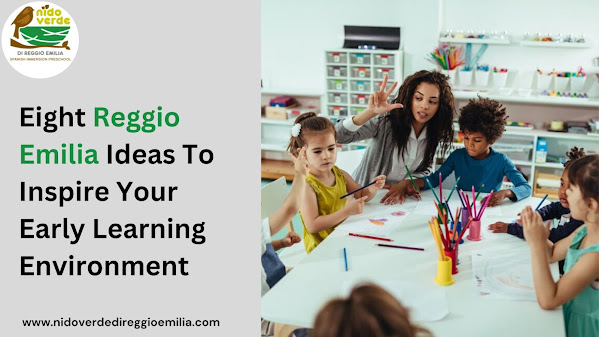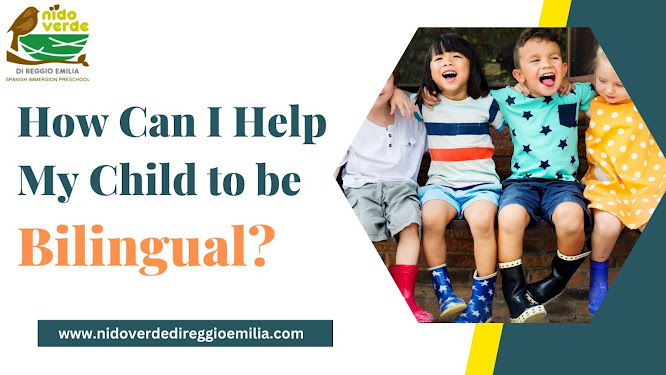Eight Reggio Emilia Ideas To Inspire Your Early Learning Environment
Even if you don't work at an early childhood education and care facility that is modeled after Reggio Emilia and Spanish immersion school Austin, you can still employ many of the famous method's ideas in your own early learning setting.
What Is Reggio Emilia?
Reggio Emilia is a highly regarded early learning methodology that was developed shortly after the end of World War II in a tiny town in northern Italy. The concept provides an inspiration for early childhood education and care services that can modify the ideas to fit their own cultures and circumstances, as opposed to being a formal design for early learning.
In order to motivate daily learning experiences and interactions, thousands of early childhood education and care services all over the world adhere to the concept and follow the guiding principles established by the creator, Loris Malaguzzi.
How Can Early Childhood Education And Care Services Incorporate The Reggio Emilia approach?
Remember that becoming "Reggio Emilia-certified" as an instructor does not require formal training. In order to deepen their understanding of the concept, students may go to seminars or workshops, although Reggio Emilia is an approach to early learning or private schools Austin, not a formal organization.
Make your early learning environment more inspiring by using these eight ideas:
1. Every child is filled to the brim with wonder and curiosity about the world. As a result, children are more likely to learn when they investigate topics that interest them.
Tip: Set up a few activity tables so that the kids can decide on their own subjects for additional research and learning when they arrive in the morning.
2. The philosophy's basic principle is that every child is strong, capable, and resilient.
Tip: Regularly express your conviction that every child has a voice and is a valuable, competent, and creative individual. Putting these phrases up somewhere in the classroom is also a wonderful idea because "seeing is believing"!
3. Children can express themselves in "100 languages." It emphasizes how crucial it is to provide kids with a variety of channels via which they can express their ideas and expertise.
Tip: These languages can range from singing, dancing, and dramatic theater to painting, sketching, and sculpture. Ask them what they enjoy doing and gently prod them to explore other ways of expressing themselves.
Also read More About The Importance Of Creative Play In Your Child’s Learning & Development
4. In Reggio Emilia, the surroundings are regarded as the third teacher. The classrooms should feature real-world supplies and equipment to spark kids' imaginations, nurture their creativity, and promote teamwork and communication.
Tip: Make your classroom cozy, warm, and loving, but try to limit the amount of clutter. The areas must be well-lit by natural light, have a strong emphasis on nature, and change frequently to entice kids to learn more about their interests.
5. Instead than having all the kids participate in the same activity at the same time with predetermined results, place an emphasis on open-ended project work. This method gives the child the freedom to create their own learning and allows them to become deeply engaged with subjects of personal interest.
Tip: Provide a wide range of resources, interactions, and opportunities.
6. Show off and document the kids' work. Reggio Emilia places a strong emphasis on recording the children's dialogues and artwork so that everyone involved—the kid, their family, and the educators—can observe, reflect, evaluate, and take full advantage of possibilities to deepen and extend the child's learning.
Tip: Record interactions with the youngster and take pictures of the child's work.
7. Foster connections among families, the school community, and the kids.
Tip: Keep in touch with families frequently to provide them with updates on how their children are progressing, and look for chances for our families and educators to collaborate so that each kid can reach their full potential.
8. The teacher actively participates in learning and knowledge construction.
Tip: Instead of seeing yourself as a "imparter of knowledge," try to think of yourself as a collaborator and facilitator who can support and guide the kids as you all learn together.
Final Thoughts
Schools with a Reggio Emilia influence provide a different method of instruction. The curriculum is customizable and mostly centered on the interests of the individual child, unlike in mainstream or traditional early learning contexts. There are many ways that educators can draw inspiration from the Reggio Emilia principles and apply them to their own classroom environments, even though some schools operate with more conventional structures and established curricula. No action is right or bad. The most important thing is that every child receives a high-quality early education, which will lay a solid foundation for their future, healthy growth, and development.
Are you prepared to board the leading private, progressive and Bilingual Preschool Austin? Enrollment is now available at our lower school with a Reggio-inspired curriculum.
By completing an inquiry form and booking an in-person or online school tour, you can start your child's educational journey right away.
At Nido Verde Di Reggio Emilia, we believe in learning through play in a loving and respectful environment. We provide a Spanish speaking environment in which children can explore. For more details you can call us on 512-202-8295 and email us via admissions@nidoverdedireggioemilia.com.



Comments
Post a Comment